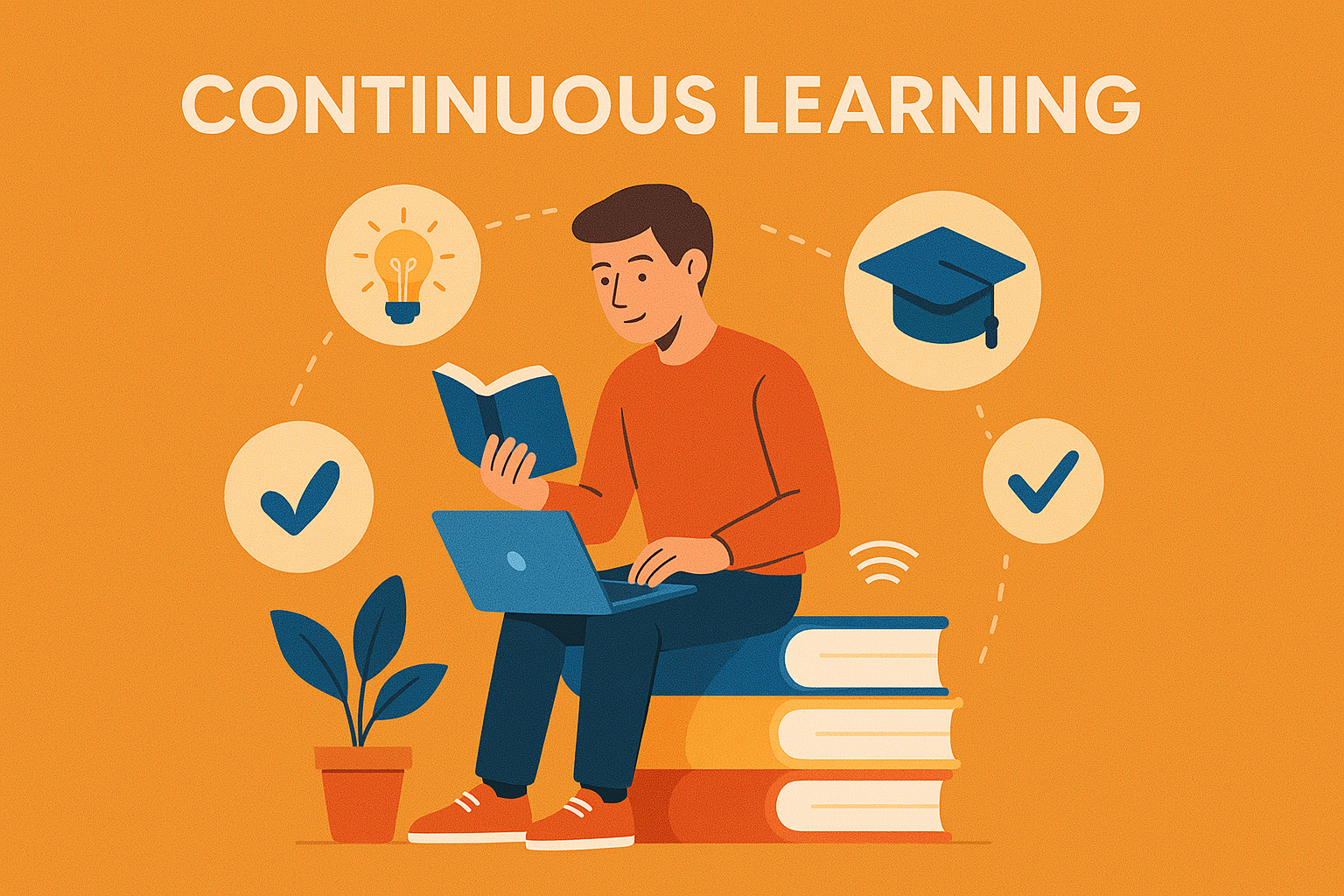Building a Culture of Continuous Learning in Engineering Teams

In the ever-evolving world of digital engineering, the half-life of technical knowledge is shrinking. Tools change. Frameworks emerge. Best practices evolve. What worked five years ago is now legacy - and what’s cutting-edge today will be standard tomorrow.
For engineering teams to stay relevant, effective, and resilient, learning can't be a once-a-year training event. It must become a habit. A mindset. A culture.
A culture of continuous learning isn’t just about keeping up - it’s about unlocking potential, driving innovation, and building organisations that adapt and thrive in a world of constant change.
So how do we build it?
The Case for Continuous Learning
Let’s be clear: continuous learning isn’t a perk. It’s a strategic differentiator.
Teams that prioritise learning outperform those that don’t. They adopt new technologies faster, solve problems more creatively, and recover from failure more effectively. They retain top talent and create environments where people feel energised, not obsolete.
And in today’s landscape - where complexity, scale, and velocity are accelerating - learning isn’t optional. It’s how we future-proof our teams and our businesses.
But culture doesn’t happen by accident. It must be designed, nurtured, and led.
What a Learning Culture Looks Like
A strong learning culture in engineering is defined not by how many training courses are available, but by how learning shows up in everyday work. You’ll see it in:
Engineers experimenting with new tools in low-risk environments.
Teams running retrospectives that surface real lessons - not just action items.
Juniors asking questions without fear, and seniors mentoring with generosity.
Slack threads where knowledge is shared openly, not hoarded.
Time carved out for innovation, reading, and skill-building.
Leaders modelling curiosity, not pretending to have all the answers.
It’s not performative. It’s deeply embedded.
Barriers to Watch For
If learning is so valuable, why is it often neglected?
Here are some common blockers:
Time pressure: Teams are under constant delivery strain, with no slack for exploration or development.
Fear of failure: Mistakes are penalised, not mined for insight.
Hierarchical dynamics: Junior voices are drowned out, and knowledge stays siloed.
Misaligned incentives: Performance is measured by output, not improvement or initiative.
Lack of psychological safety: People don’t feel comfortable saying “I don’t know.”
These aren’t technical problems - they’re cultural ones. And they need cultural solutions.
Practical Ways to Build a Learning Culture
Building a learning culture isn’t about grand programmes - it’s about small, intentional shifts in mindset and behaviour, reinforced consistently. Here’s how to get started:
1. Make Learning Visible and Valued
Celebrate not just outcomes, but the learning journeys behind them. Recognise team members who run brown-bag sessions, write internal blogs, or mentor others. Create space in sprint reviews or stand-ups to share what’s been learned - not just what’s been done.
2. Normalise Not Knowing
Create an environment where asking for help or admitting gaps is seen as strength, not weakness. As a leader, be vulnerable yourself: say “I’m learning too,” or “I got that wrong - here’s what I took from it.”
3. Give Time to Grow
Dedicate time for learning within delivery cadences. This could be as structured as “10% learning time” per sprint, or as flexible as innovation weeks, labs, or hackathons. But it must be protected time - not the first thing cut when deadlines loom.
4. Invest in Accessible Learning Resources
Give teams easy access to curated learning paths, technical content, and on-demand platforms. But remember: content alone doesn’t create culture. It’s what you do with it that counts. Encourage discussion, sharing, and application.
5. Encourage Peer Learning
The best learning often happens between colleagues. Support knowledge-sharing through pair programming, design reviews, and communities of practice. Rotate roles to build breadth and empathy across disciplines.
6. Run Regular Retrospectives - with Teeth
Retros aren’t just for fixing process - they’re for reflecting on how we learn. What did we try? What worked? What didn’t? What will we explore next time? Make these sessions safe, honest, and forward-looking.
7. Lead with Curiosity
Leaders set the tone. Ask “what did we learn?” more often than “why did this fail?” Show interest in emerging tech, team experiments, and career development. Your curiosity becomes contagious.
Key Takeaways
✅ Continuous learning is a strategic advantage
It builds adaptability, accelerates innovation, and strengthens engineering resilience.
✅ Culture is built through everyday habits, not heroic interventions
The small signals - time made for learning, leaders asking questions, knowledge freely shared - create momentum.
✅ Psychological safety is the foundation
Without it, people won’t ask, share, experiment, or grow.
✅ Learning must be prioritised, not squeezed in
Time, resources, and recognition all need to align if learning is to thrive.
✅ Leadership matters
What leaders reward, model, and reinforce shapes what teams believe is possible.
In Closing
Building a culture of continuous learning isn’t just about making your engineers smarter - it’s about making your organisation stronger.
It’s how you unlock creativity. It’s how you stay relevant. And most importantly, it’s how you create a place where people want to stay, grow, and do the best work of their lives.
Because in engineering, what you know today matters. But your ability to keep learning? That’s what defines your future.
Engineering leader blending strategy, culture, and craft to build high-performing teams and future-ready platforms. I drive transformation through autonomy, continuous improvement, and data-driven excellence - creating environments where people thrive, innovation flourishes, and outcomes matter. Passionate about empowering others and reshaping engineering for impact at scale. Let’s build better, together.
